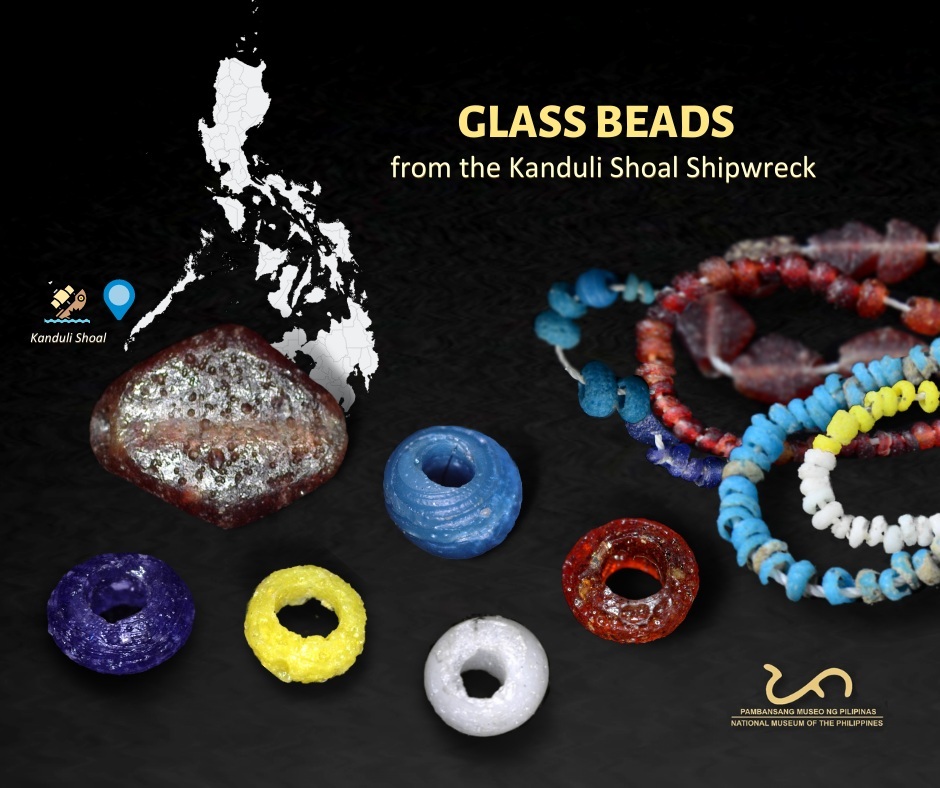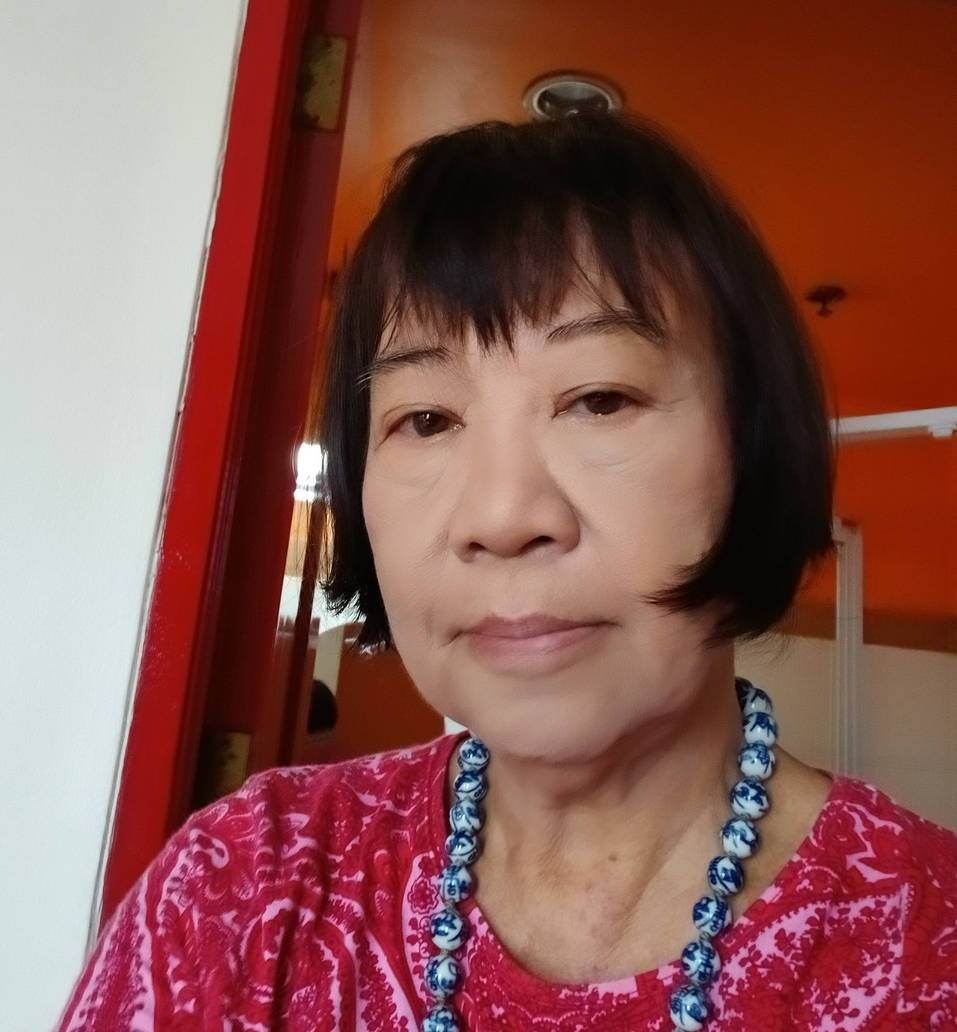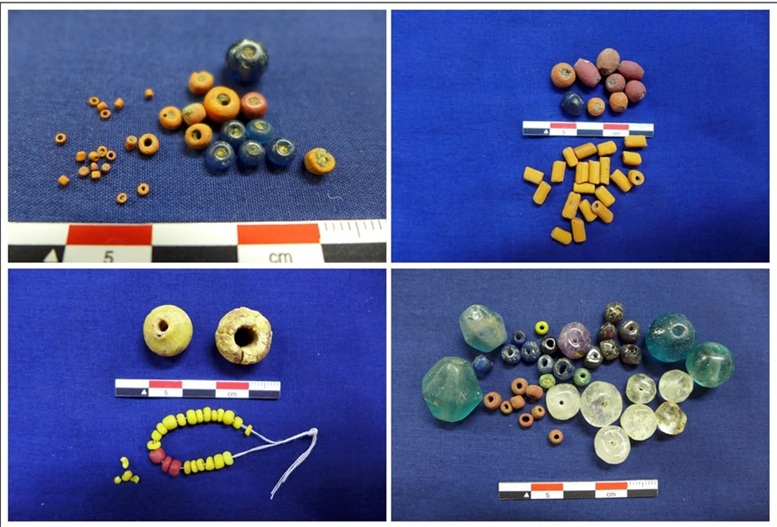
Durable and portable, glass beads were one of the most commonly and widely-traded objects in the world, reaching the Philippine archipelago long before 1521. Known as Indo-Pacific beads, Arikamedu, India was the site for making the first drawn beads in Asia. Other sites included Oc Eo (Vietnam), Mantai (Sri Lanka), and Klong Thom (Thailand) by the second century AD.
Beads were used as decorations, burial offerings, and other expressions of culture. Signifying social status, Cordillera heirloom beads are passed from generation to generation to this day. They are “virtually the only imported beads” to be found in the remote areas of Borneo and the Philippines for a thousand years in exchange for valuable raw materials, notes Peter Francis Jr in his paper on Indo-Pacific beads in Asia.
Early communities
Through ancient glass beads, many insights have been gained into early native communities, their culture and practices, identity, social status, and maritime trade exchange among Island Southeast Asia (ISEA) and beyond.
A research paper titled Island Southeast Asia and ancient glass exchange: Insights from jar burial sites in Bacong, Central Philippines investigates the composition and origin of glass beads in Bacong, Negros Oriental dated 2,000 years ago. It also examines its origins and travel routes from and into the Philippine archipelago, and what local products did foreign traders seek in exchange for the beads.
Published in the Journal of Archaeological Science: Reports (January 2025), its authors are Alexandra De Leon, National Museum of the Philippines (NMP), Laure Dussubieux (Field Museum), Laura Junker (University of Illinois, Chicago), and Eusebio Dizon (NMP).
Glass beads, Bacong
The Bacong area in Negros Oriental is known for its elaborate jar burials; archaeological excavations have also revealed numerous quantities of ceramic vessels, iron tools, and glass and stone ornaments, part of the country’s Metal Age, 500 BCE-1000 CE.
The glass assemblage from Bacong includes a total of 110 beads, mostly small and monochromatic, typical of Indo-Pacific beads cut from drawn tubes, “rolled in ash and heated to round the edges.” The beads, in oblate and tubular forms, include “opaque, translucent, and transparent types” in red, orange, yellow, blue, and green.
The Field Museum, Chicago and a research center in Nancy, France analyzed some 49 beads from Bacong.
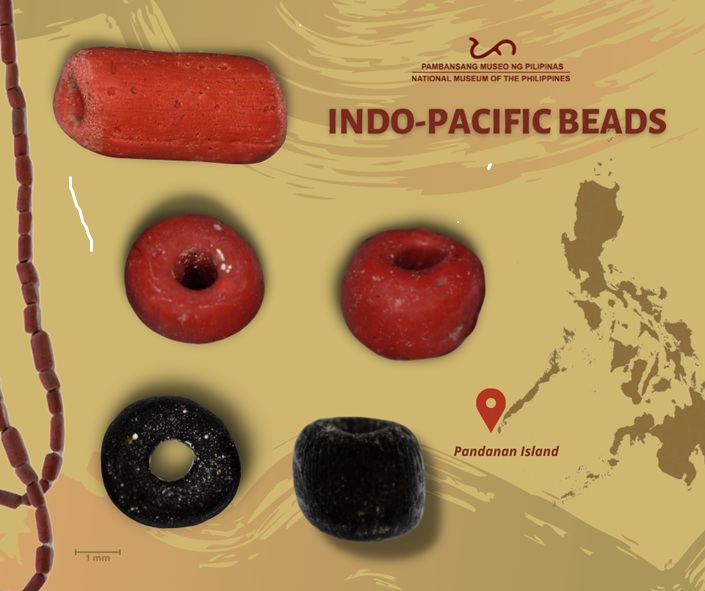
Trans-Pacific networks
The study reveals that the glass beads from Bacong originated from South Asia, specifically South India and Sri Lanka, the Sasanian Empire sites (an ancient empire in Iran and Iraq) in the Middle East, and Asia.
It also reveals the existence of a network of glass producers and craftsmen, artisans, traders, and consumers from South Asia, West Asia, Mainland Southeast Asia, and China engaged in glass production and long-distance exchange and trade with Island Southeast Asia.
Bead types
Based on manufacturing process, two types of glass beads are formed: drawn-out beads and wound-type beads.
Drawn out beads, usually 6 mm in diameter, have monochrome opaque colors of red, black, white, green, and yellow as well as translucent blue, green, and violet made of glass tubes cut into small, individual beads.
In the wound bead type, a hot and molten rod of molten glass is coiled around a rod, stick, or wire in front of a flame. The beads may be decorated with inlays while still soft. After cooling, the molten glass is removed from the rod. Swirl marks on the surface of the bead’s hole make identification of its origins possible.
Beads in shipwrecks
A number of shipwrecks in the country have also yielded glass and stone beads, including the Lena Shoal Shipwreck, Busuanga, Palawan found in 1996 and the Santa Cruz Shipwreck in Zambales, 2001.
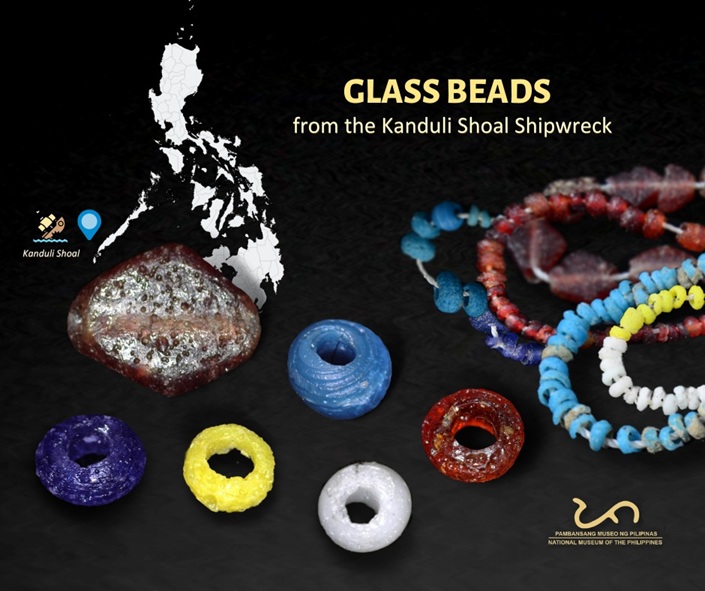
Kanduli Shoal Shipwreck,1985. Over 200 glass beads were recovered from the Kanduli (Royal Captain) Shoal Shipwreck near Palawan, as well as Chinese blue-and-white porcelain, bronze gongs, earthenware and stoneware jars.
The Kanduli beads were in plain- colored in blue, red, white, and yellow; similar beads have been found in Bolinao, Pangasinan; Calatagan, Batangas; Sta. Ana, Manila; and Porac, Pampanga dated from the 12th to the 16th centuries.
Further analysis revealed that the beads showed a wound manufacturing technique, and contained high levels of lead, indicating a Chinese bead type. The beads also have a circular hole suggesting its use as a necklace or bracelet.
Investigators believed that the vessel was part of the Southeast Asian intra-regional trade that possibly covered the Borneo to Manila route from China.
Pandanan Shipwreck,1993. Pandanan Island, Palawan. Believed to be a cargo boat from South China or Vietnam, mostly Vietnamese ceramics dated 15th century CE were recovered as well as thousands of glass beads found inside Vietnamese stoneware jars. The glass beads consisted only of two colors, opaque red and black, and originated from the Sungai Mas site in Malaysia.
Local products such as cotton, pearls, tortoise shells, betel nuts, and forest products such as rattan, bees wax, animal pelts, tree resin, and honey were likely traded for these beads.
